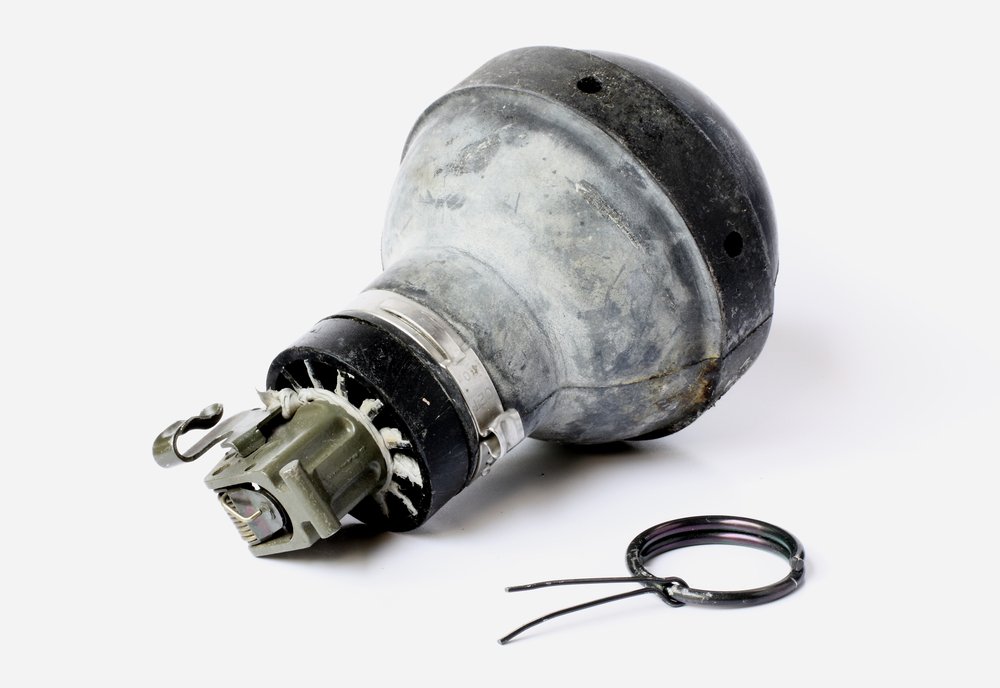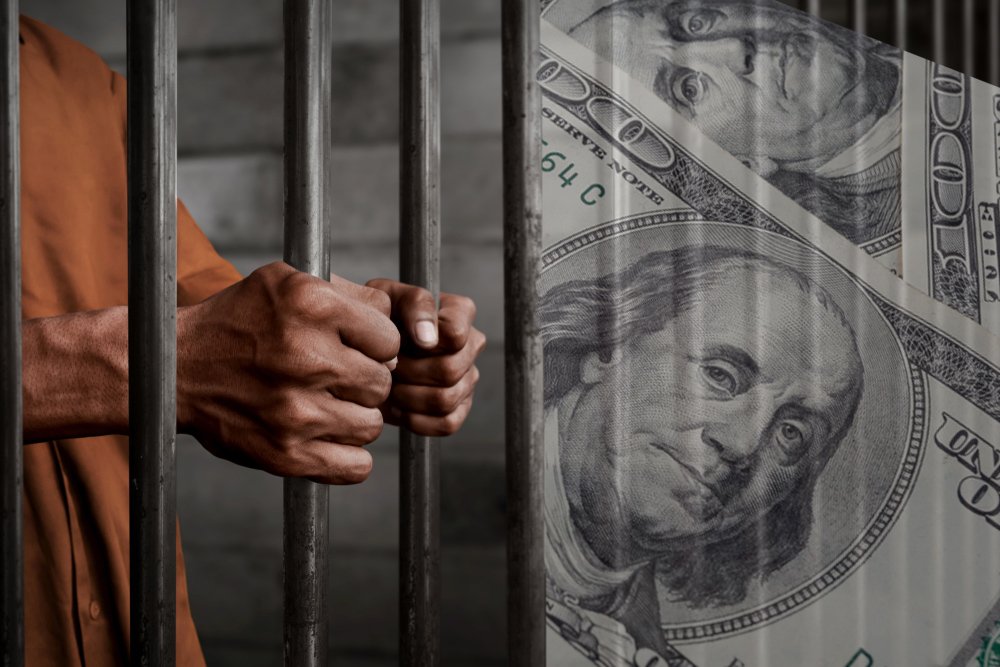Penal Code § 22910 PC makes it a crime to change, alter, or remove the name of the manufacturer, the serial number, or any identification mark on a tear gas weapon. Doing so is a felony offense punishable by up to three years in custody.
The language of the code section states that:
22910. (a) Any person who changes, alters, removes, or obliterates the name of the manufacturer, the serial number, or any other mark of identification on any tear gas weapon is guilty of a public offense and, upon conviction, shall be punished by imprisonment pursuant to subdivision (h) of Section 1170 or by a fine of not more than two thousand dollars ($2,000), or by both that fine and imprisonment.
(b) Possession of any such weapon upon which the same shall have been changed, altered, removed, or obliterated, shall be presumptive evidence that such possessor has changed, altered, removed, or obliterated the same.
Examples
- erasing the serial number on a custodial officer’s tear gas grenade.
- changing the manufacturer’s name on a tear gas gun.
- marking out the manufacturing information listed on a peace officer’s tear gas cartridge.
Legal Defenses
A person has the right to challenge a charge under this statute with a legal defense. A few common defenses include defendants showing that they:
- did not do anything to a “tear gas weapon”,
- were arrested after an unlawful search or seizure, and/or
- were charged following a coerced confession.
Penalties
A violation of California Penal Code Section 22910 is a felony offense (as opposed to a misdemeanor ). The crime is punishable by:
- custody in jail or prison for up to three years, and/or
- a maximum fine of $2,000.
Our California criminal defense attorneys will discuss the following in this article:
- 1. What does it mean to “deface a tear gas weapon”?
- 2. Can an accused raise a legal defense?
- 3. What are the penalties for Penal Code 22910 PC?
- 4. Can I expunge this from my record?
- 5. Are there similar crimes?

Penal Code 22910 makes it a crime to deface or alter a tear gas weapon.
1. What does it mean to “deface a tear gas weapon”?
People in California are guilty pursuant to this statute if they change, alter, or remove any of the following on a tear gas weapon:
- the name of the manufacturer,
- a serial number, or
- any mark of identification.i
A “tear gas weapon” means:
- any shell, cartridge, or bomb capable of being discharged or exploded, when the discharge or explosion will cause or permit the release or emission of tear gases.
- any revolvers, pistols, fountain pen guns, billies, or other forms of device, portable or fixed, intended for the projection or release of tear gas except those regularly manufactured and sold for use with firearm ammunition.ii
A tear gas weapon can be classified as a deadly weapon.
2. Can an accused raise a legal defense?
Criminal defense lawyers draw upon several legal strategies to help clients challenge tear-gas-related charges (including those involving the illegal use of tear gas).
Three common defenses include criminal lawyers showing that the defendant:
- did not do anything to a “tear gas weapon.”
- was stopped or arrested after an unlawful search or seizure.
- was charged after law enforcement coerced a confession.
2.1 No tear gas weapon
This statute only applies to the defacement of a “tear gas weapon.” Further, this phrase carries a precise definition under California law. This means it is always a defense for accused people to show that they did not have or deface a tear gas weapon.
2.2 Unlawful search or seizure
A search or seizure by the police is against the law if either act is performed without a search warrant or without a valid excuse for not having one. If authorities obtain evidence from an unlawful search and seizure, then that evidence can get excluded from a criminal case. This means that any charges in the case could get reduced or even dismissed.
2.3 Coerced confession
California law states that police may not use overbearing measures to coerce a confession.
If a party can show that the police coerced him/her into a confession, then:
- the judge may exclude the confession from evidence, or
- the case could get dropped altogether if the party got pressured into confessing to a crime he/she did not commit.

A violation of this law can result in jail time and/or a fine.
3. What are the penalties for Penal Code 22910 PC?
A violation of this law is a felony. Per the statute, a felony conviction is punishable by:
- custody in state prison (as opposed to county jail) for up to three years, and/or
- a maximum fine of $2,000.iii
People will likely receive the maximum penalty under this statute if they have a prior conviction of a crime.
Further, people can receive a harsher sentence for this offense if any sentencing enhancements apply to their case. An example is PC 186.22, which imposes additional prison time for a crime if a person commits it for the benefit of a street gang.
4. Can I expunge this from my record?
No. Persons that receive prison time for a violation of this law cannot get the conviction expunged, per Penal Code 1203.4.
California law states that people cannot get a conviction for a crime if it results in prison time.
5. Are there similar crimes?
There are three crimes related to the defacement of a tear gas weapon. These are:
- unlawful use of tear gas – PC 22810,
- unauthorized possession of weapons in public buildings – PC 171b, and
- assault weapon laws – PC 30600
5.1 Unlawful use of tear gas – PC 22810
Under PC 22810, unlawful use of tear gas is a crime where people buy or use tear gas for any purpose other than self-defense. The law also criminalizes the unlawful possession of tear gas if done for any purpose other than self-defense.
Further, PC 22810 makes it illegal for a person to use or possess tear gas if addicted to a narcotic drug.
As with a violation of PC 22910, a violation of this law can lead to a felony conviction punishable by up to three years in prison.
5.2 Unauthorized possession of weapons in public buildings – PC 171b
Per PC 171b, unauthorized possession of weapons in public buildings is a crime where people bring or possess certain “weapons” into public buildings and meetings open to the public (as opposed to private property).
Some of the “weapons” prohibited in public places under this statute include:
- firearms (including handguns) and loaded firearms,
- stun guns, and
- certain knives.
Note that public buildings include buildings on school grounds.
Unlike a violation of PC 22910, a prosecutor can charge a violation of this law as a misdemeanor offense.
5.3 Assault weapon laws – PC 30600
Under Penal Code 30600, it is a crime for people to manufacture, distribute, transport, import, sell or give away assault weapons and BMG rifles.
Assault weapons include items like machine guns.
Note that Penal Code 16950 is a similar statute that prohibits certain firearms and weapons in California altogether. Examples of prohibited items include:
- blackjacks,
- sandclubs,
- short-barreled rifles,
- slungshots, and
- zip guns.
The possession of any such weapons can be charged as a misdemeanor or felony offense.
As with PC 22910, a general aim of these laws is to help promote the control of deadly weapons and destructive devices.
Legal References:
- California Penal Code 22910 PC.
- California Penal Code 12402 PC.
- California Penal Code 22910 PC. See also California Penal Code 1170h PC.
